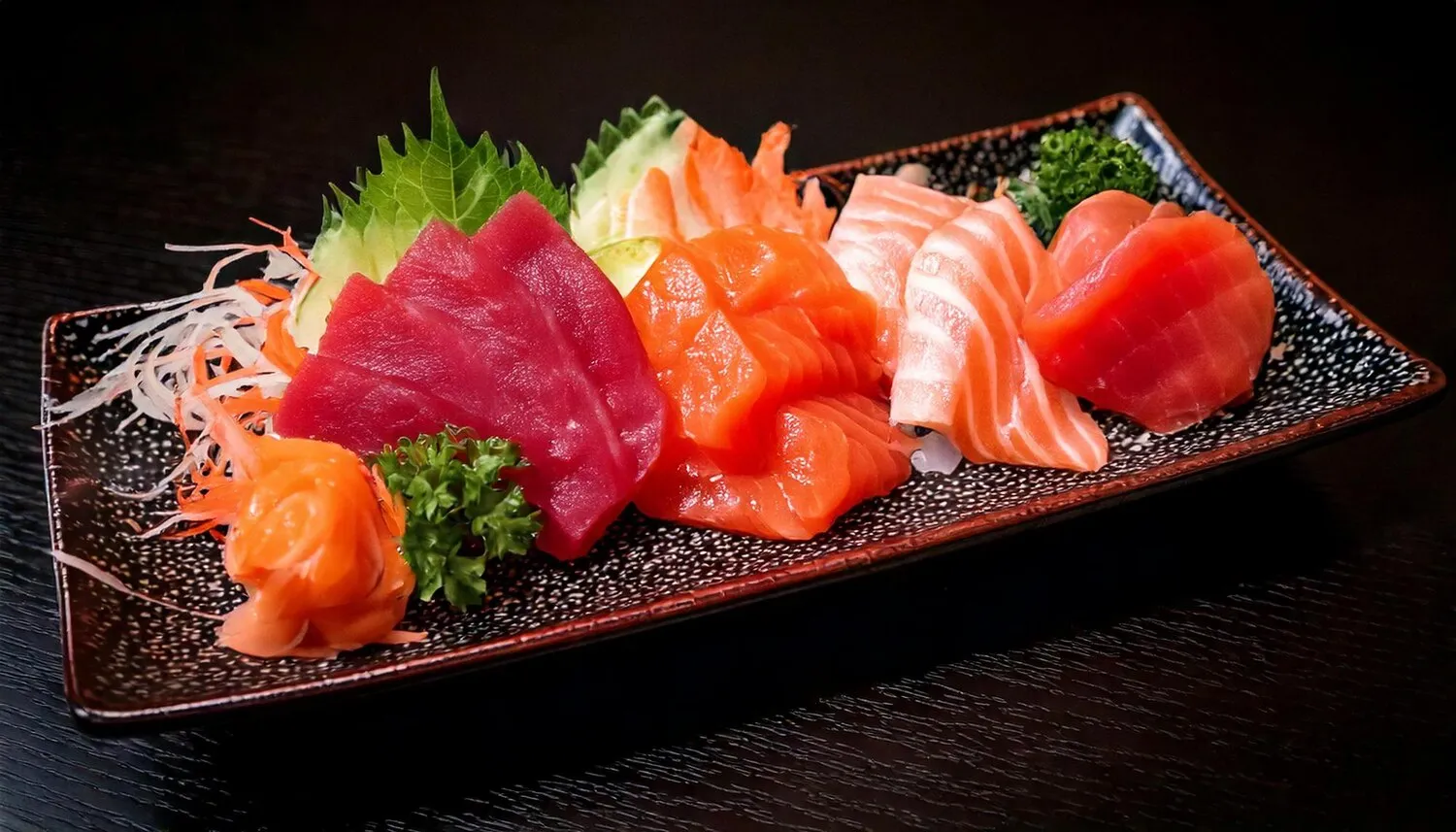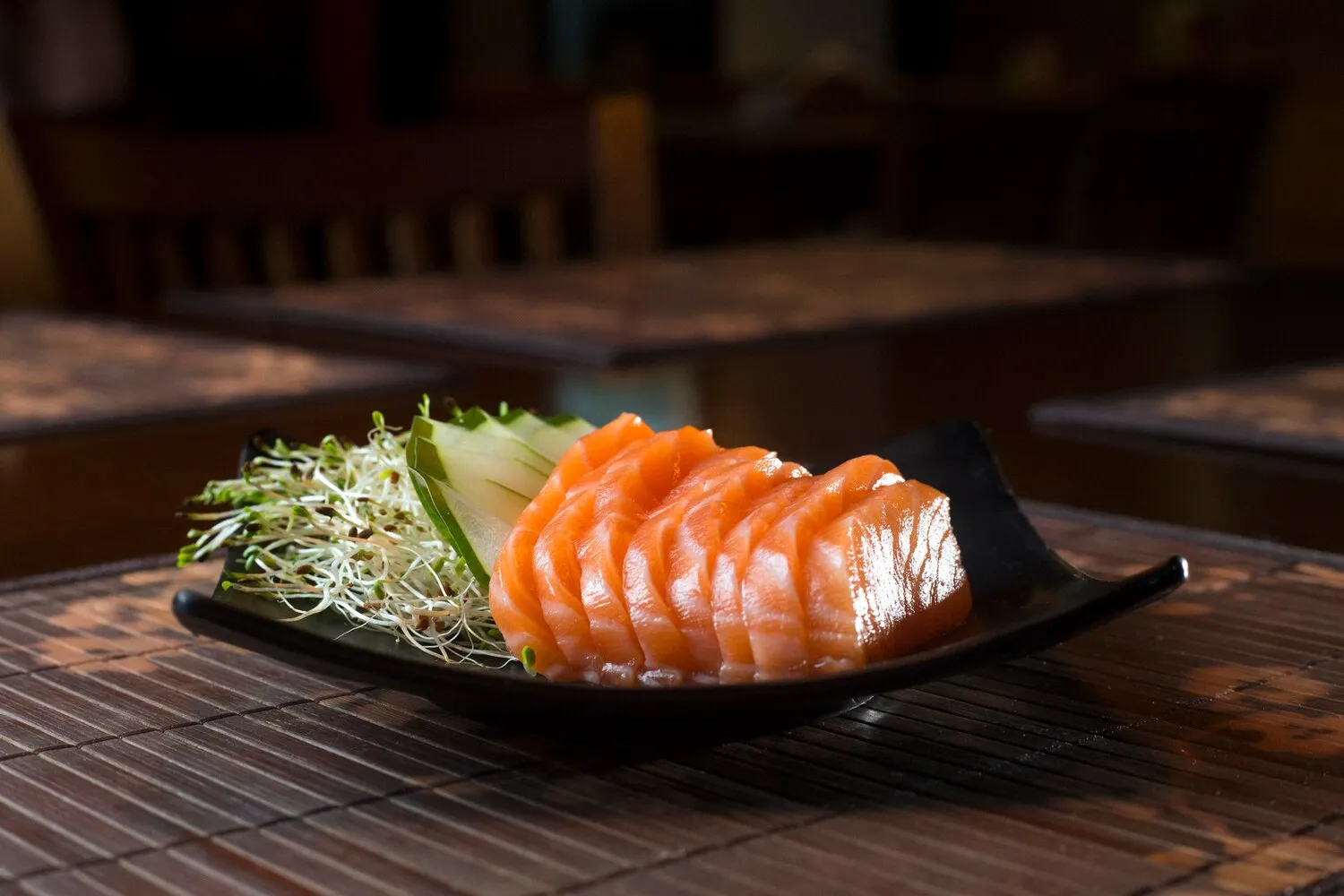
Sashimi
Freshly sliced raw fish, a classic Japanese delicacy.
Nutrition Facts
* The % Daily Value (DV) tells you how much a nutrient in a serving of food contributes to a daily diet. 2,000 calories a day is used for general nutrition advice.
Sashimi's origins can be traced back to ancient Japan, where the need to preserve fish led to techniques like salting and pickling. As refrigeration technology was not available, only the freshest fish could be consumed raw. This evolved from simple preservation to an appreciation for the pristine flavor and texture of the highest quality fish, prepared with meticulous skill.
Sashimi is deeply intertwined with Japanese culinary culture, embodying principles of simplicity, respect for ingredients, and aesthetic presentation. It is often served as a starter course in formal meals and is considered a refined and elegant dish.
Ingredient Quality
The quality and freshness of the fish are of utmost importance. Only the highest-grade fish, handled with extreme care, are used for sashimi. The sourcing and selection process is a craft in itself.
Knife Skills
The slicing technique is crucial for both flavor and presentation. Chefs undergo rigorous training to master the art of cutting fish to maximize its texture and visual appeal. The cuts are designed to be precise and beautiful.
Presentation
Sashimi is presented artfully, often arranged on platters with edible garnishes like daikon radish, shiso leaves, and seaweed. The presentation is designed to stimulate all the senses and enhance the dining experience.
Order of Consumption
Traditionally, sashimi is eaten in a specific order, starting with lighter, milder flavors and progressing to richer, fattier ones. This allows the palate to fully appreciate the nuances of each fish.
The core flavor of sashimi is the pure, unadulterated taste of the fish itself. Subtle variations arise from the type of fish, its fat content, and the freshness of the cut. Common accompaniments like soy sauce, wasabi, and ginger enhance rather than mask the natural flavors.
The flavor profile of sashimi varies widely depending on the fish. Tuna (maguro) offers a rich, meaty flavor, while salmon (sake) provides a buttery, fatty taste. White fish like sea bream (tai) have a delicate, clean flavor. The accompanying soy sauce adds umami and saltiness, wasabi provides a pungent kick, and ginger acts as a palate cleanser between different types of fish. The quality of the fish is paramount, with the freshest cuts exhibiting a firm texture and clean, vibrant taste.
Soy Sauce Usage
Avoid drowning the sashimi in soy sauce. Dip only a small portion of the fish to avoid overpowering the delicate flavor. High-quality soy sauce is recommended.
Wasabi Placement
Instead of dissolving the wasabi into the soy sauce, place a small dab directly on the fish. This prevents the wasabi from losing its pungency and allows you to control the intensity of the spice.
Ginger as Palate Cleanser
Use the pickled ginger (gari) to cleanse your palate between different types of sashimi. This helps you appreciate the unique flavor of each fish without lingering tastes interfering.
Freshness Check
Look for fish that appears moist and glistening, with vibrant color and a firm texture. Avoid fish that looks dull, dry, or has a fishy odor.
Explore additional Sashimi dishes and restaurants
Explore SashimiDiscover top dining spots and culinary experiences in Bolzano.
Explore BolzanoLearn more about the food culture, restaurant scene, and culinary heritage of Italy.
Explore Italy
